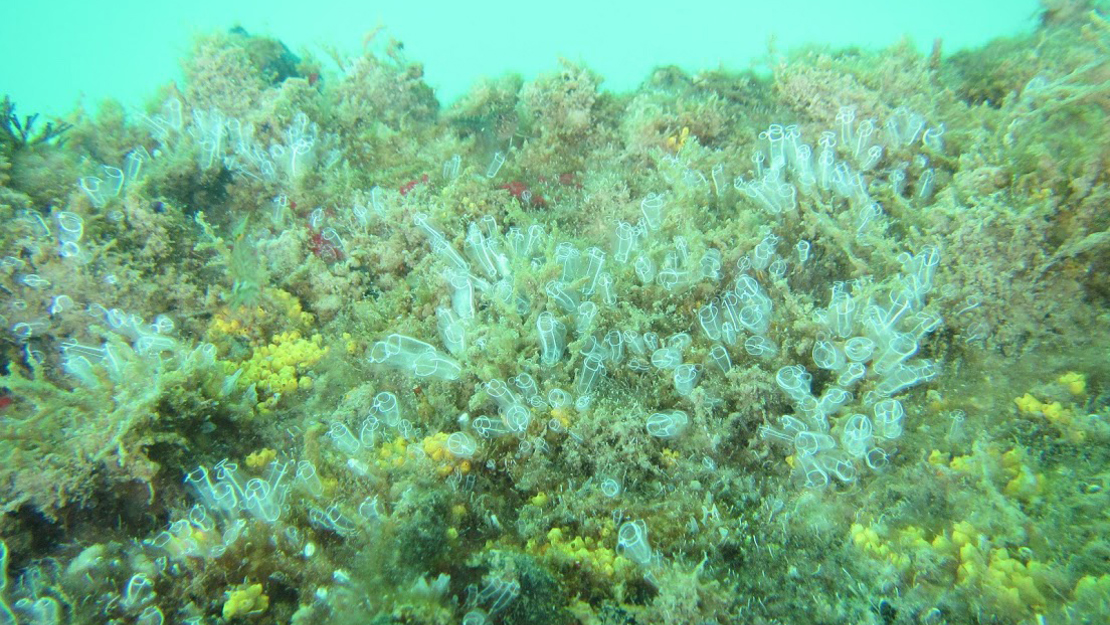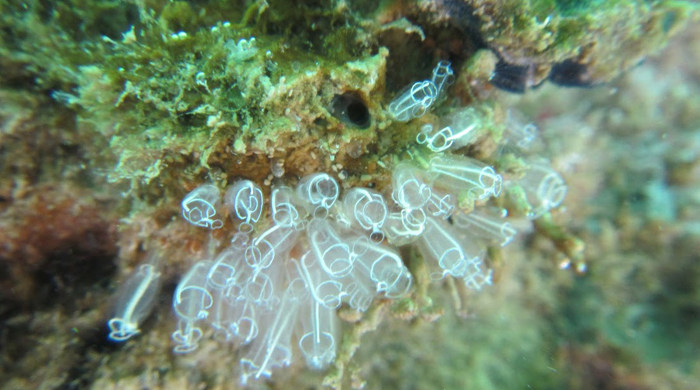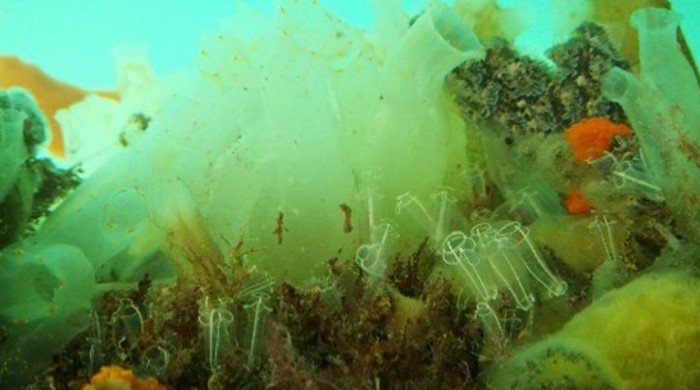Clavelina lepadiformis
Lightbulb ascidian
Family: Clavelinidae
Origin: North-east Atlantic ocean

Regional Pest Management Plan (RPMP) status
- Whole region — Sustained control
General description
A tunicate that forms colonies of transparent tubes about 5cm long, with white, yellow or pink bands that make it appear to glow like a light bulb.
What you need to know
To help protect our environment:
- You must not breed, distribute, release or sell any lightbulb ascidian within the Auckland region.
- If you’re in charge of any craft in the Auckland region you must ensure that the level of fouling on the hull and in niches of the craft does not exceed ‘light fouling’.
- If you’re in charge of any craft in the Auckland region you must ensure that it is free of all ballast water, bilge water, holding tank water or sea water held in any other container when entering any marine body from the land.
Habitats
Can form large colonies on hard surfaces such as marinas and rocky sub-tidal and inter-tidal habitats. The lightbulb tunicate is most commonly spread as fouling on boat hulls.
Impact on environment
This species is relatively newly documented as an invasive species, so its potential impacts are still uncertain. However, given its ability to form large colonies, it is likely to be able to outcompete native species and may impact upon the mauri of the moana.
Control
Management
Before moving your boat or other craft to new locations, make sure the hull, anchor chain and all other equipment on board is clean and free of marine pests or other fouling. Think about where you’re taking on or releasing ballast, bilge or holding tank water, or water in any other container such as chilly bins, to avoid spreading marine pests.
For more information on lightbulb ascidian and how to avoid spreading them, please visit Prevent pests from spreading or contact Auckland Council at pestfree@aucklandcouncil.govt.nz.





